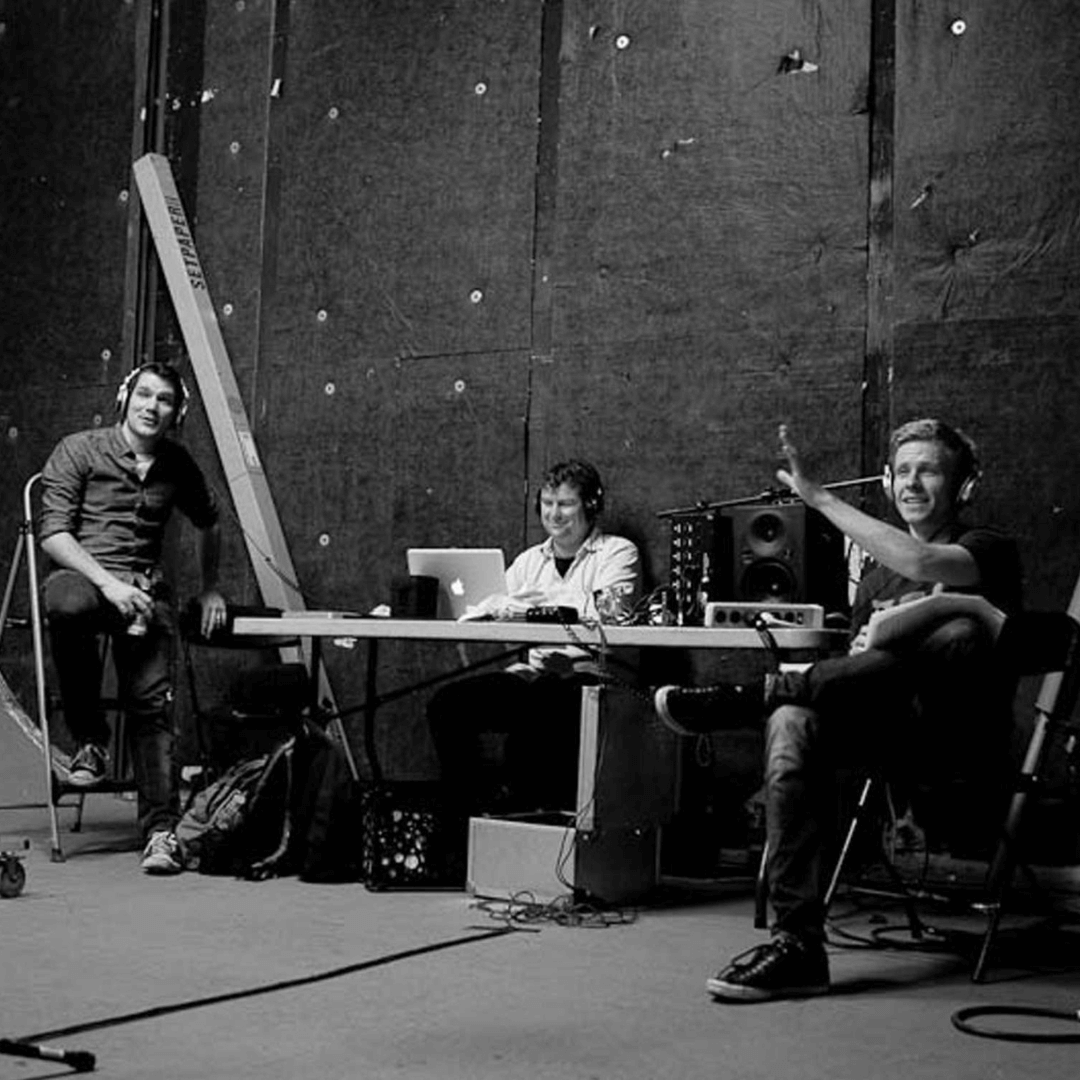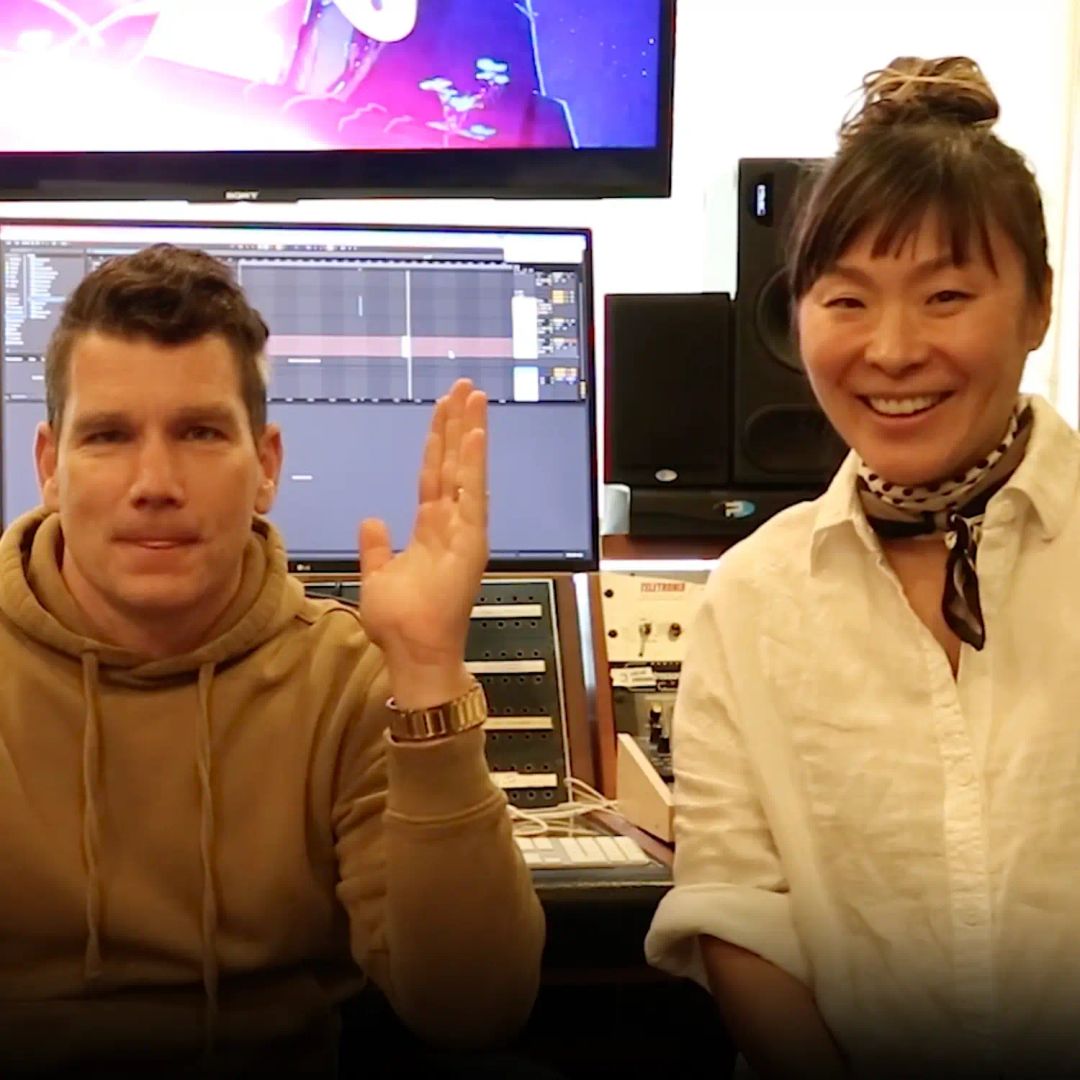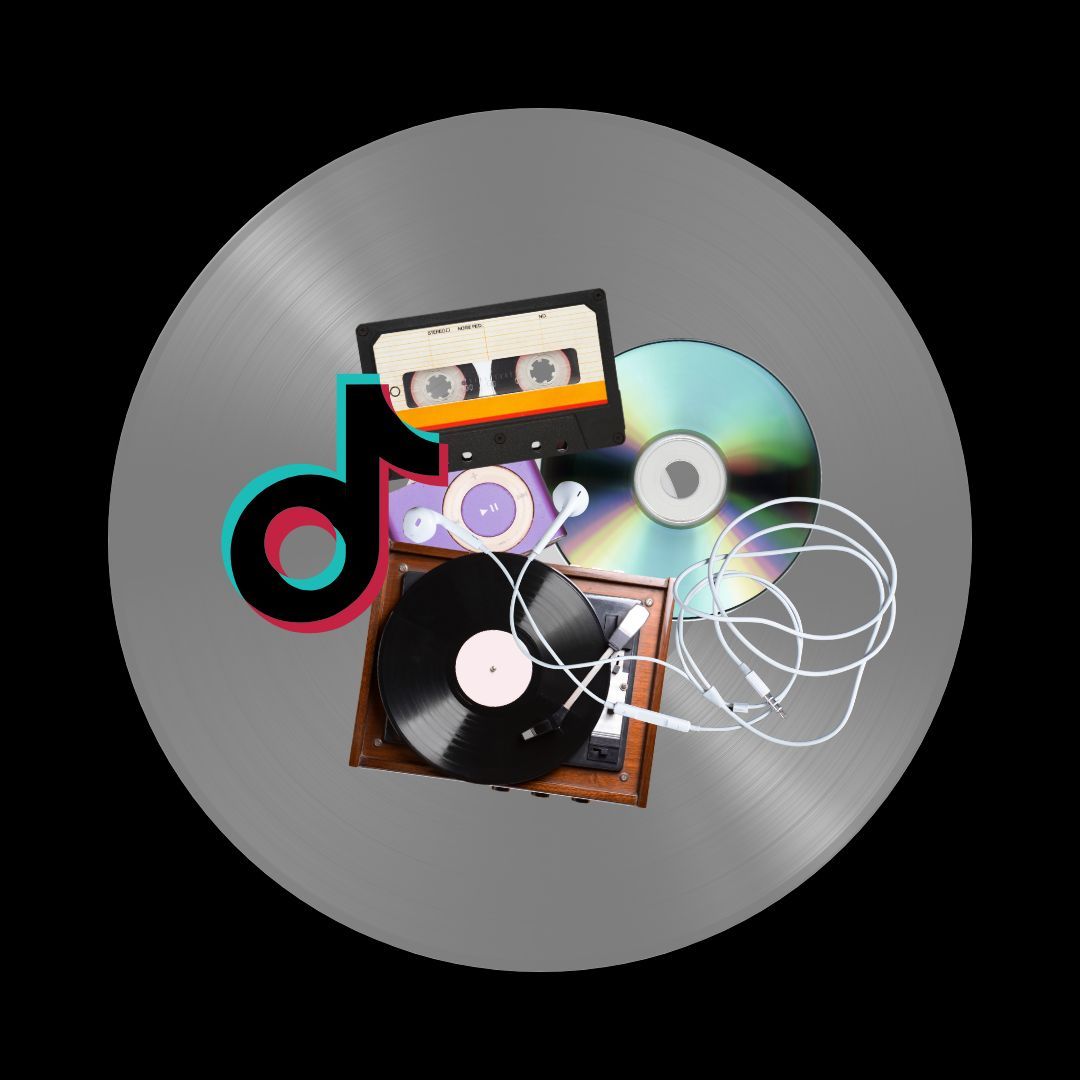Short Form Sounds: The Fast Fashion of Music
Note: the voiceover includes audio from interviews. Feel free to listen for the full experience!
As a Gen Z kid who has grown up with Vine, TikTok, and Instagram Reels, the idea of “duetting” videos with trending “sounds” just makes sense to me. But when I recently tried to explain this idea of “sounds” to my parents, I was surprised how hard it was to define.
For a few minutes, their questions overlapped my attempts at explanations. I tried comparing the idea to visual memes. I imitated examples. I pulled out my phone to show a few clips. No luck.
Finally, my dad figured out a comparison of his own: TV jingles. Modelo commercials remix the theme from “The Good, The Bad, and The Ugly” by Ennio Morricone. It features a 15 second clip of the song, and some viewers today might not even know that this iconic theme comes from a 1966 Western movie, not a beer ad. That clicked.
Sounds, as I will be talking about them, are short musical soundbites (~15 seconds) that creators use underneath their video content. As my dad pointed out, it’s similar to how part of a song might be used underneath a TV ad.
Once they understood, there was a moment of silence. My dad just shook his head. “Things are always changing,” he said, “this is what it is these days.” My mom laughed and added, “Someday, kids will talk about songs and call them ‘longform sounds.’”
How did we get here?
The idea of “longform sounds” feels both ridiculous and terrifyingly plausible. Over time, the way we interact with music has become increasingly fragmented. New technology has changed our listening habits: we can listen to whatever we want, whenever we want, for however long we want.
Back when record players were the dominant way to listen to recorded music, people listened to the vinyl spin all the way through the loop until the needle clicked – a sign it was time to flip to the B side. This type of listening taught patience and made it a more immersive experience.
Then, with cassette tapes in the 1970s, music was still physical, but now more portable. People could make their own “mixtapes”, curating playlists of songs to share (personally, I’m still waiting to be wooed with such a grand gesture).
With CDs in the 1980s, music became skippable. Unlike vinyl records, there was no friction – you could skip with the click of a button. Suddenly, songs began to matter more than albums. Michael Jackson’s 1987 album Bad, contained 11 songs and 9 of those were released as singles to build anticipation for the album. It’s said that MJ wanted “every song to be a killer.”
By the late 1990s, the invention of MP3 players and iPods had changed everything. Music became digital, portable, and fully customizable. People could create their own playlists, skip between songs, and even shuffle. Album order became an afterthought.
With streaming platforms emerging in the 2010s, skipping became easier than ever. Songs only have a few crucial seconds to impress the listener and entice them to stay.
And now, in the age of shortform media, songs are experienced in musical clips – sounds. These tiny musical moments are meant to serve the visual content, whether it is a dance, a meme, or a montage. These sounds are primarily special because of their connection to a trend. The music is becoming secondary.
These shifts have made me wonder: is shortform media changing the way we think about music? Are songs becoming limited to just a couple of lyrics? What does this mean for content creators and for the communities that form around them?
To explore these questions, I spoke with my fellow Antfood employees. What I found both confirmed my fears and gave me hope.
What does this mean for songs?
Our listening habits are changing – what does this mean for the songs themselves? In some cases, these viral sounds are our gateway to discovering new music. Avanti Singh, Creative Production Intern, has found some of her favorite songs this way.
Avanti: With Kenya Grace's music, I heard the “Meteor” song, and I only found out about the song because I found her Instagram or it became a trendy song on Instagram and TikTok.
But other times, we rarely hear more than those viral lines.
Linton: What was that Tinashe song? “Is somebody gonna match my freak? Is somebody gonna match my nasty?” Yeah, I remember that. Yeah.
Jo: Yeah. Okay. So that became a trend for a while. And did you know the entire song?
Linton: No, I think I've only heard the entire song a handful of times. I've heard that trend probably 86 and a half times. Exactly. Exactly that many times.
Me too, Linton, me too. And before I had these conversations, I felt guilty about the fact that I don’t know the full versions of many of the sounds that I hear all the time. A part of me worries that the way that we move through sounds so quickly is yet another reflection of how we burn through trends. These sounds are becoming fast fashion for our ears.
But Linton Smith II, Composer/Sound Designer, raised a different perspective.
Linton: There's a part of me that thinks it's cool that just a segment of a song lives its own life. To me it feels similar to the way I think about sampling, which is something that when I was growing up doing jazz stuff, I feel like I was like, “oh nah, sampling's wrong. You should just do your own thing.” But it's recontextualizing a part of something and making it into something different.
Linton’s view gives me a bit of relief. I’ve been so bogged down lamenting our changing listening habits that I didn’t even realize the beauty in this opportunity. These song clips get their own moment in the spotlight.
If songs are becoming sounds, this shift might be changing our underlying expectations for media. Sometimes we even have such strong associations with these sounds that it feels unnatural when there are none. Trevor Haimes, Senior Producer, told me:
Trevor: The other day I was actually watching a Reel and there was no sound on it. And my brain was like, “oh, there should be a sound under this.” I was going through the repertoire of all the, you know, famous reels, songs that they use. It's ingrained in my viewing and I expect now to at least have a version of that, or like, at least something that I'm familiar with when I'm viewing Instagram.
When Trevor first told me this, I laughed. But also, I totally got it. Our brains are conditioned now to expect a miniature soundtrack to each video. We often think of social media as being a visual-leaning platform, but we aren’t fully realizing the invisible power of sound. And as our brains are starting to expect these soundtracks, creators have been figuring out how to meet and, in some ways, manipulate those expectations.
What does this mean for creators?
Trevor notes that for social media content creators, familiarity can be a powerful tool. When a sound is trending, creators can use that to their advantage.
Trevor: 'Cause if you already know that it has an effect on someone's emotions or how they're perceiving the video and that it's performing well, as a result, you're probably gonna gravitate towards using that specific song.
Trevor shows me an example: a song that is often used for spooky, unsettling videos (my apologies for subjecting you to this clip). When creators use this audio, the algorithm recognizes the sound and pushes the video to people who have interacted with similar content.
I know this system is designed to serve me – to take note of what I engage with and feed me more. And I respect that creators use trending sounds to find their audience. But the truth is, sometimes I feel like I’m being baited with a sound that my algorithm knows I won’t skip. Plus, I realize that for many artists who create their own music, this new system is cornering them into creating a few memorable lines rather than a full song.
So, for musical artists, this system can be a double-edged sword. It’s tempting to make something short and catchy – you might have better luck at your sound going viral. But are you taking advantage of the system, or just giving in to pressure? Avanti is an independent artist, and sees promises and risks with the chance to go viral.
Avanti: I really appreciate how getting the ability to get viral can help a lot of small artists grow. I feel like short form content like this helps so much with the dissemination of music and giving smaller artists a platform.
But then obviously on the other hand, it's the exact opposite of that, where it's like, do people actually get fan bases anymore or are people just finding one catchy sentence or making a meme out of your song and then that's it. Like, you're forgotten in like a week.
This is definitely a risk of going viral. Many artists end up becoming known for just a sound, not even a song. One hit wonders become one sound wonders. It’s not uncommon these days for artists to say, “Oh, I made that one sound.” Because their sounds are usually layered under someone else’s dance, meme, or montage, most viewers don’t even see the original video.
In some cases, though, the original video does go viral, and viewers become hungry for a longer version. Then comes the pressure to release that sound as a full song, even if it was never intended to be. For some artists, this can be an exciting, career-changing moment. In 2022, Scottish singer/songwriter Katie Gregson-MacLeod went viral on TikTok for a few verses from her piano ballad, “Complex”. With the encouragement of viewers, she ended up writing the rest of the song and releasing it as a demo, which today has almost 40 million streams on Spotify.
But other artists push back on this pressure. Lizzy McAlpine is a singer/songwriter whose song “You Ruined the 1975” went viral on TikTok in 2020. But, she chose not to release it as a full song. On an Instagram Live, she said:
Lizzy: I first put it online and like everyone was just barraging me and berating me about this fricken song, and all of the comments on everything, everywhere was, “Release this song.” And I was just about to release my album, and it just kinda made me sad that people only cared about that song.
Whether or not artists choose to capitalize on the momentum of a sound, it’s clear that viewers can form a sort of emotional attachment to it. These sounds become more than just background noise – they are collective inside jokes, earworms, and timemarkers. Entire communities form around them.
What does this mean for communities?
We’ve heard live bands fill the room with sound. We’ve sat in front of record players, listening to albums play from start to finish. We’ve crafted mixtapes, burned CDs, and curated Spotify playlists for every mood. Now, in the age of shortform content, the instinct to connect with others over sound hasn’t disappeared. It’s just changed.
Jean Pflum, Communications Manager, explains that for many online users, these sounds can be a way of building community.
Jean: The way that these platforms are set up is to look at all videos that have the same sound, right? Once you as an artist or a company put out a sound. It no longer is about the sound. It is about who uses the sound. These sounds get taken over and they become a meeting place for certain communities. Like I think, it's the Five Nights at Freddy's song where it’s like, “So nice to meet you…” It just became a place online for goth kids to do their makeup or show their cosplay or do the like, kinda cosplay hands, right? And it was not about the song, it was about, this song is the soundtrack for when we do cosplay.
Jean points out that sometimes, sounds can also be taken out of context and mistreated. Diana Valero, Composer/Sound Designer, agrees. She gives the example of a viral sound taken from the 2009 film, Precious.
Diana: There's this audio that's like "Since you got your degree and you know every fucking thing", and a lot of people were making funny videos using that sound that was completely taken out of context. Cause it is sort of comedic when she says it, but when you watch the movie... it's like the most devastating scene. It's a really sad scene in the movie that talks about sexual assault.
Jean explains why this mistreatment occurs.
Jean: The life of the sound isn't really determined by its creator, it's determined by its users.
So… what can we do about this?
It’s undeniable that listening trends are changing and have been for decades. As listening technology has evolved, we've moved from albums, to songs, to sounds. I’ve been feeling uneasy about the way our habits are changing. I worry that music is becoming just a mood-setter… some noise for the background rather than art to be appreciated. I worry that we’re flying through pieces of songs, not fully enjoying what we’re hearing.
But okay, enough kvetching. I’ve made myself a short list of ways to comfort these anxieties. Maybe you’ll find some of them helpful too.
Research the sounds. When you hear a sound you enjoy, leave the app. Take the time to find the original song and listen to the whole track. Look at the artist. They probably have a fun profile picture. Listen to their other work.
Listen to music intentionally. Devote more time to active listening, rather than letting music live passively in the background. Go on a walk and listen to an album, in order, all the way through. Do this with a friend. Hold hands. Stroll. Look both ways when you cross the street. Debrief the album after.
Write more full songs. I’ve become a bit too comfortable with writing single verses. I post a little snippet to Instagram and move on. I want to write more full songs. For myself.
Accept the change. This sounds contradictory to everything else I’ve written, I know. But I’m still thinking about what Linton told me: there's a beauty to these short clips. Maybe we get to appreciate a morsel of a composition in a way we wouldn’t have otherwise. Maybe we are learning to appreciate a lyric or chord progression more deeply. Maybe we aren’t losing meaning – it’s just presented in smaller pieces.
Similar content
Hackable Audio: Crafting Sonic Puzzles for Google
by Charlie Blasberg

Open-Source Music in a Collaborative World
by Pedro Botsaris

Collaborative Composition: Method & Madness
by Wilson Brown, Rory White, Jenn Fife, Sue Lee, Yuta Endo

